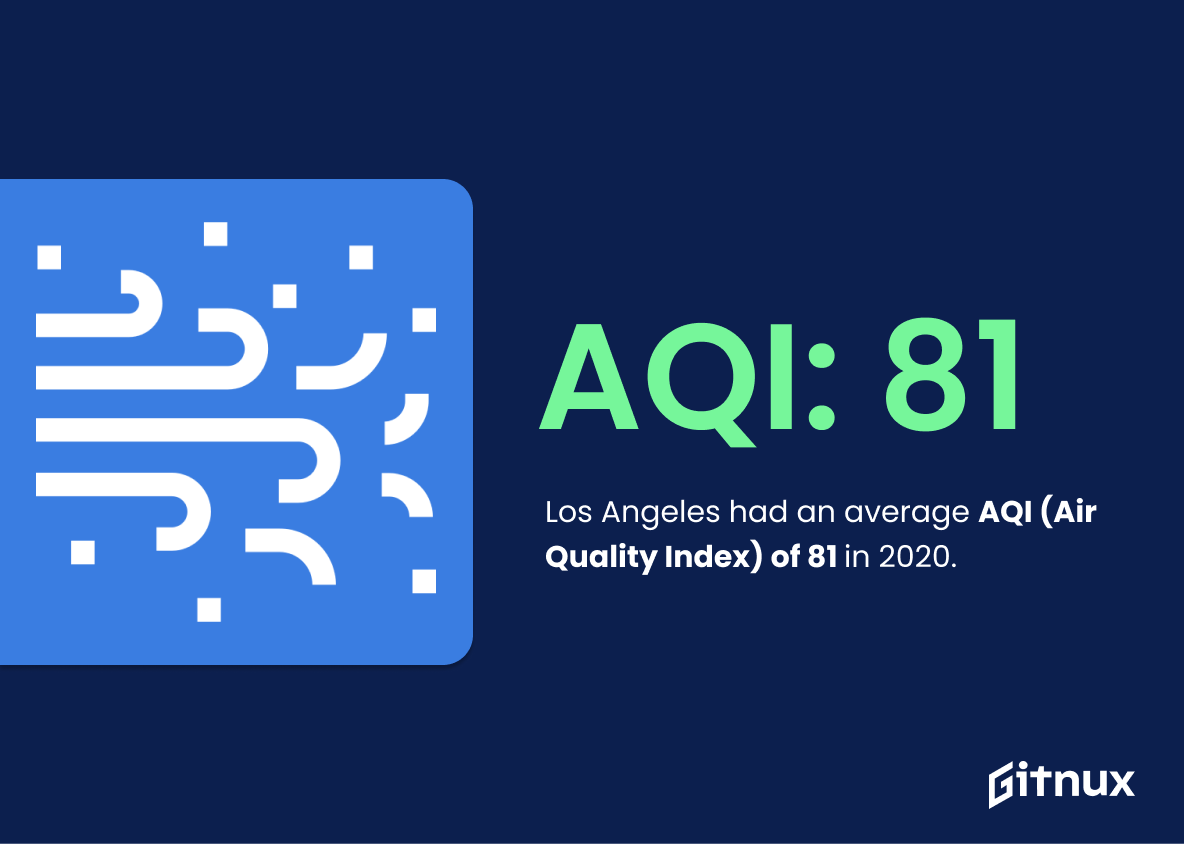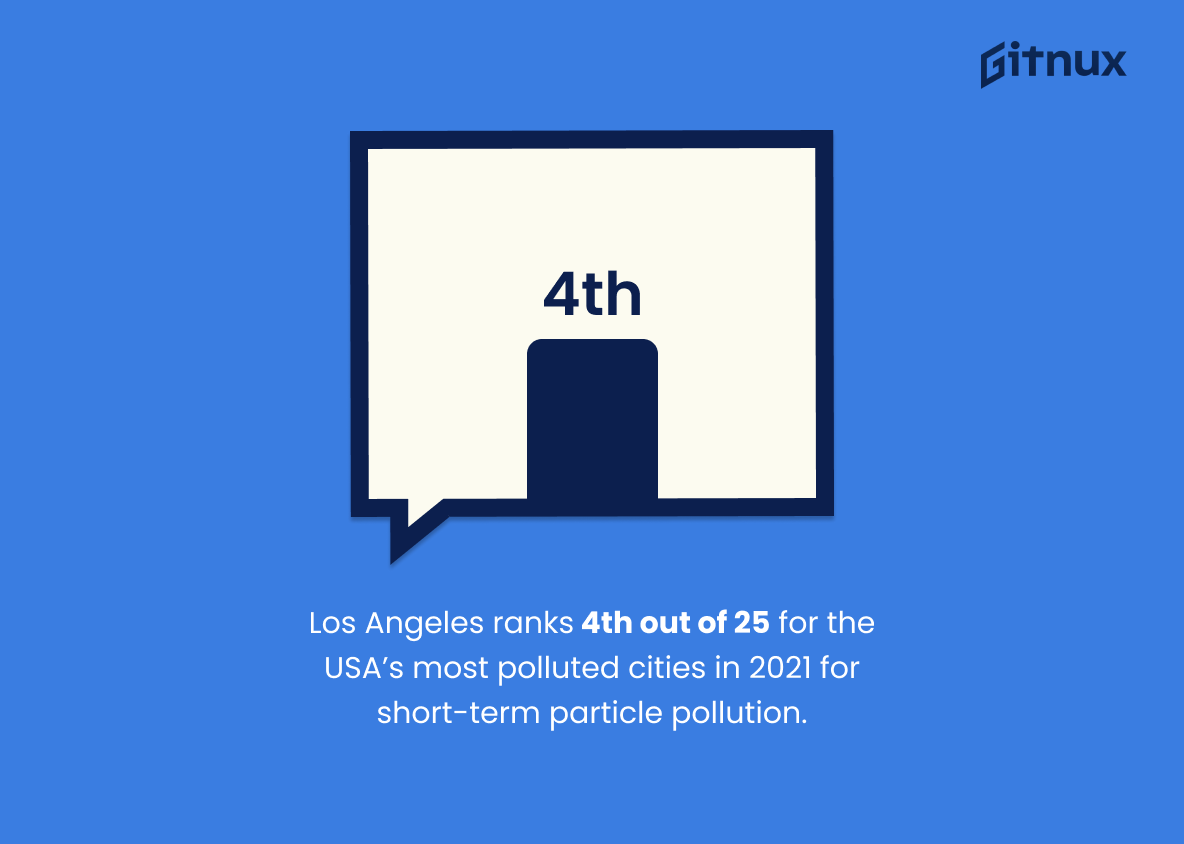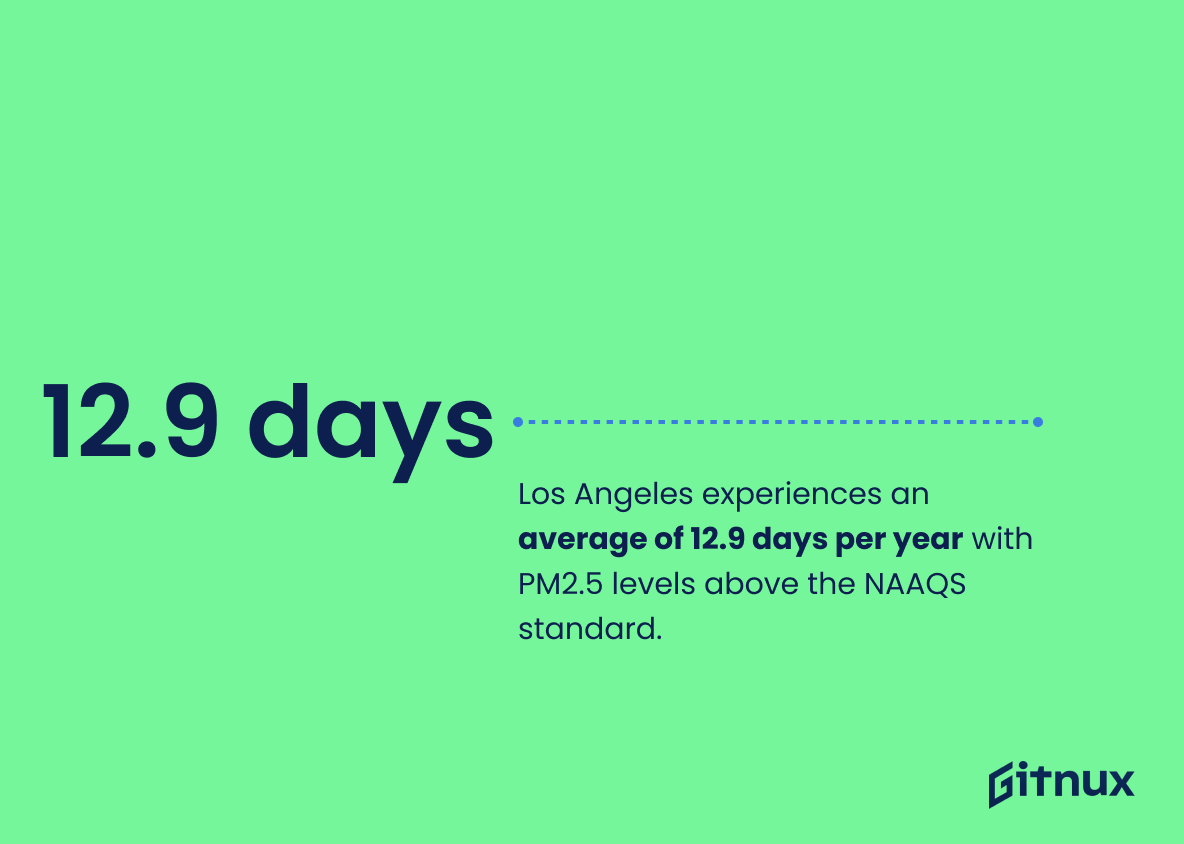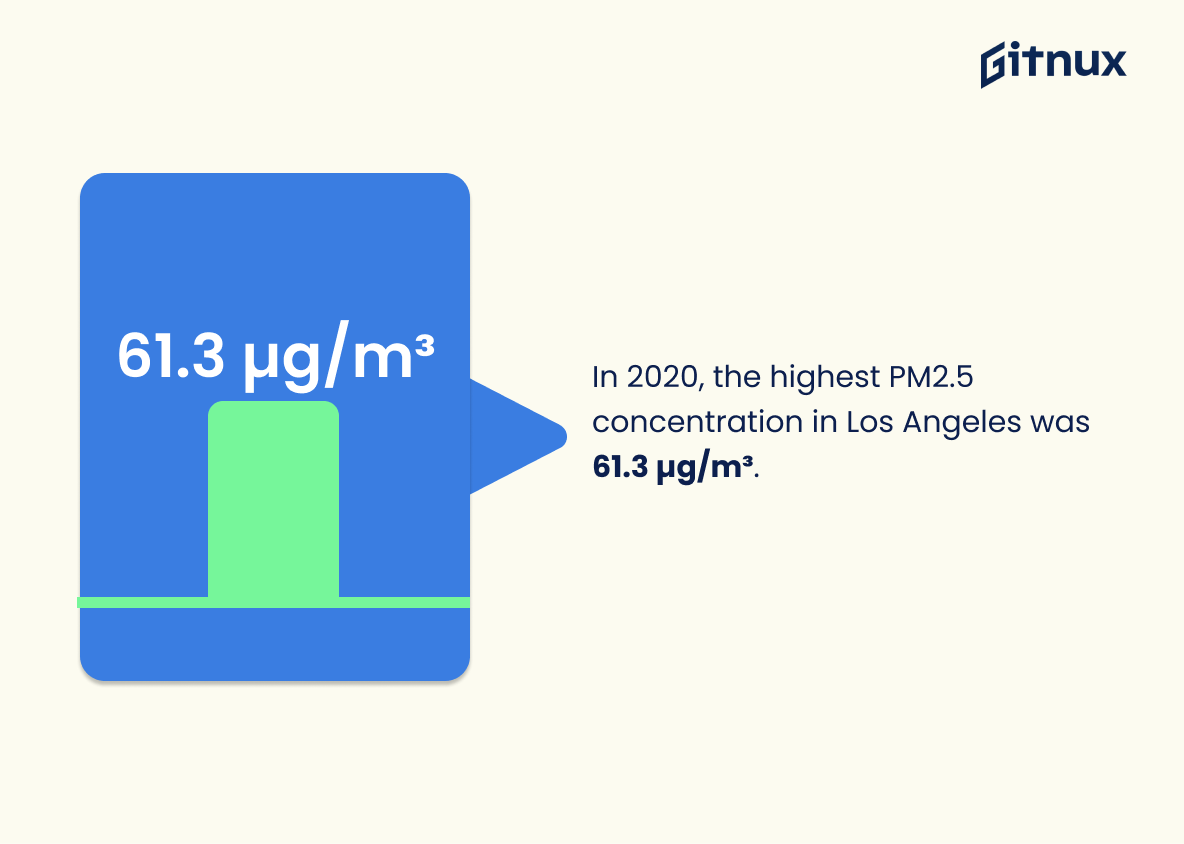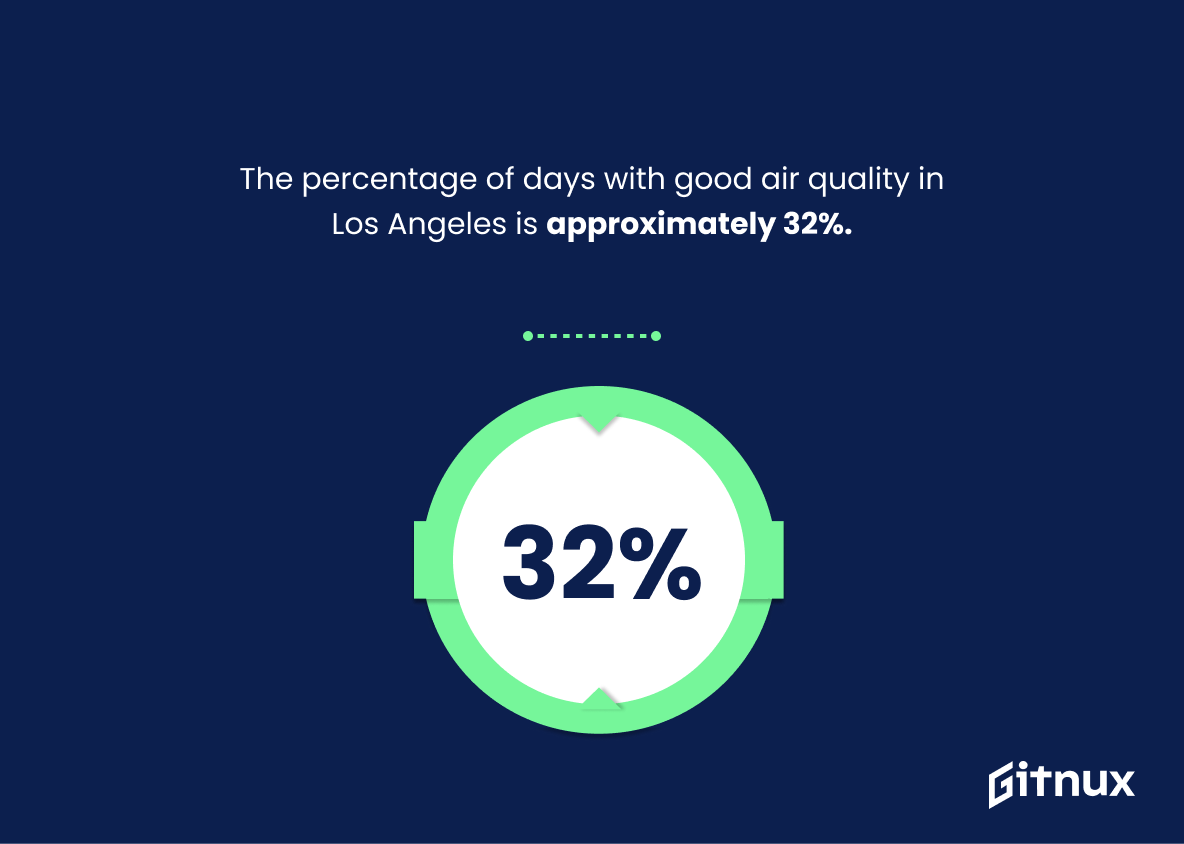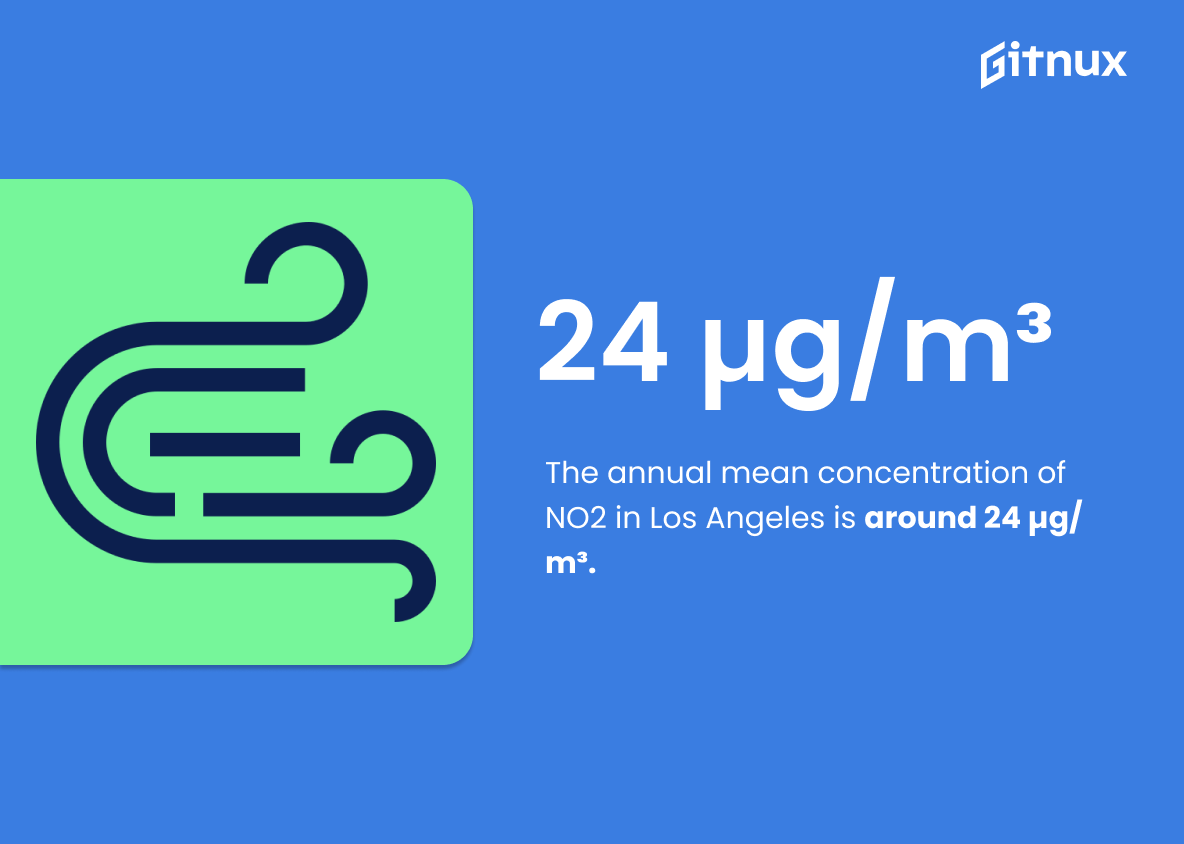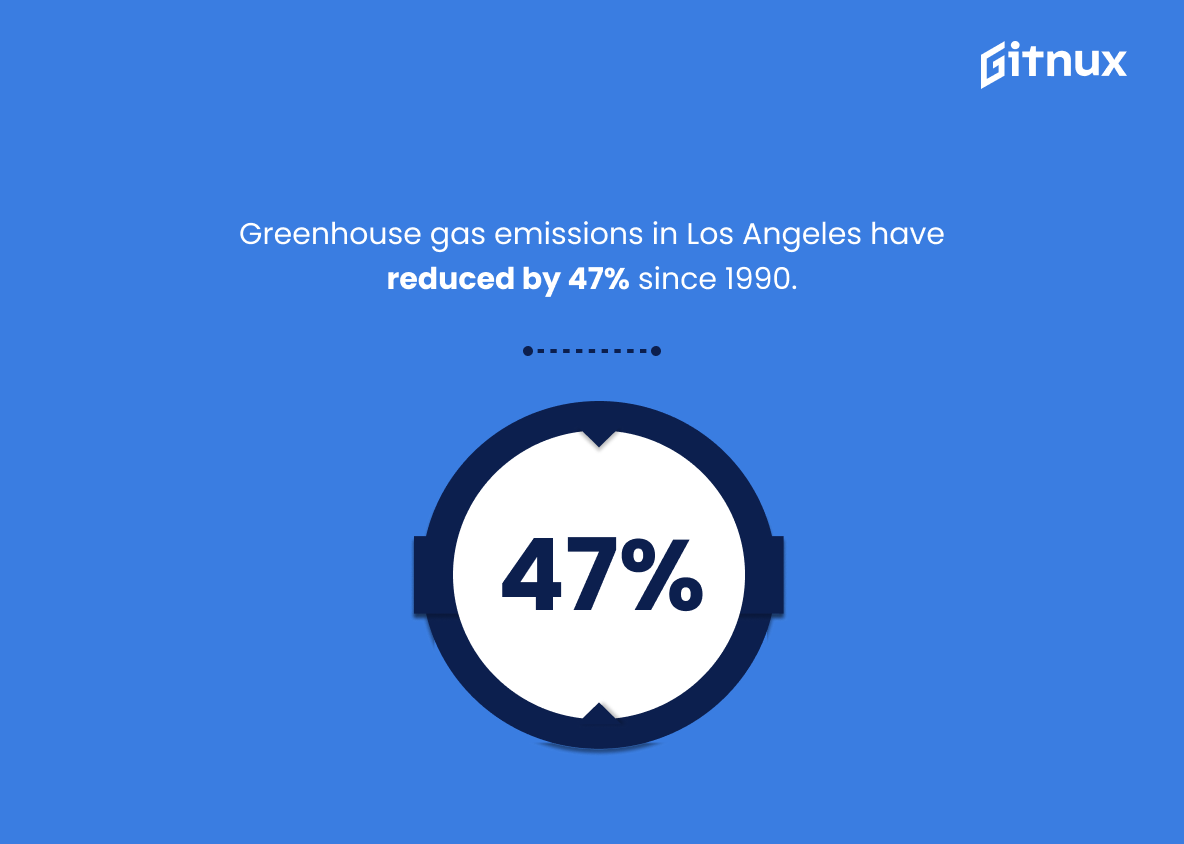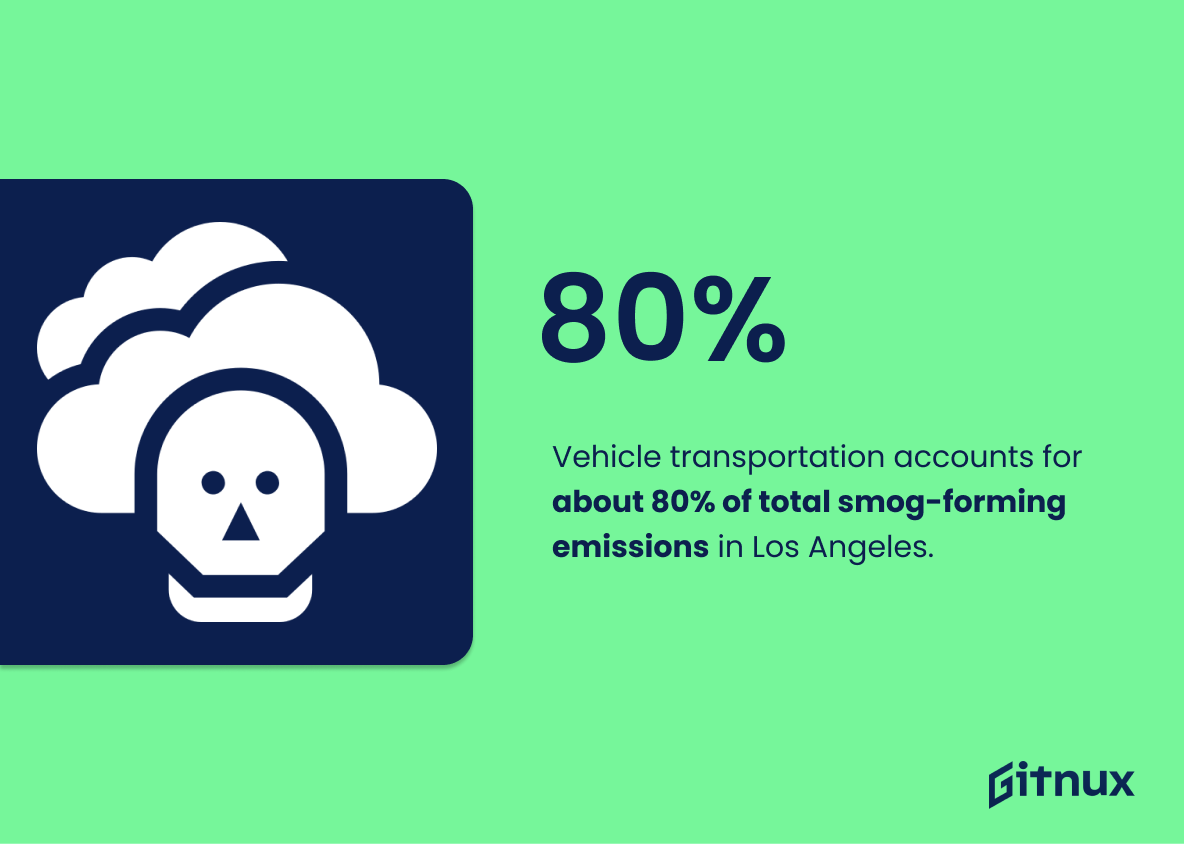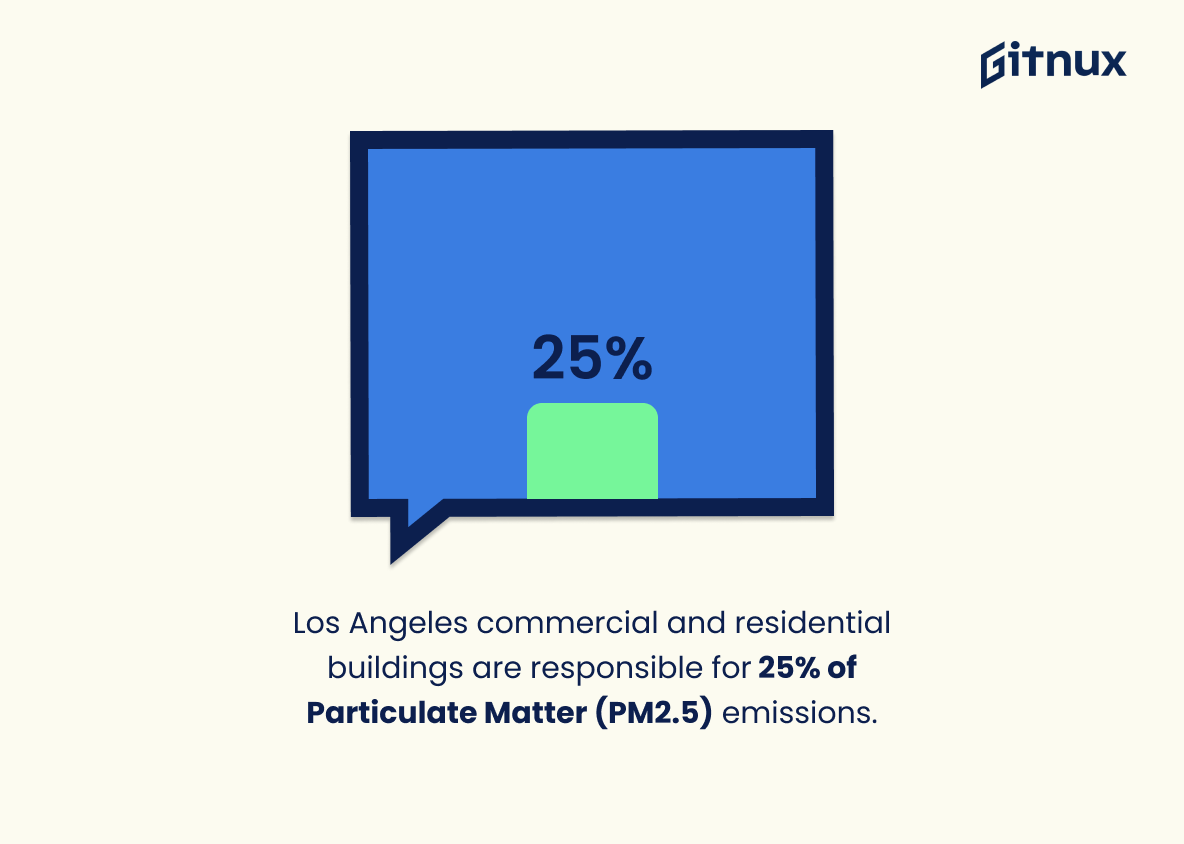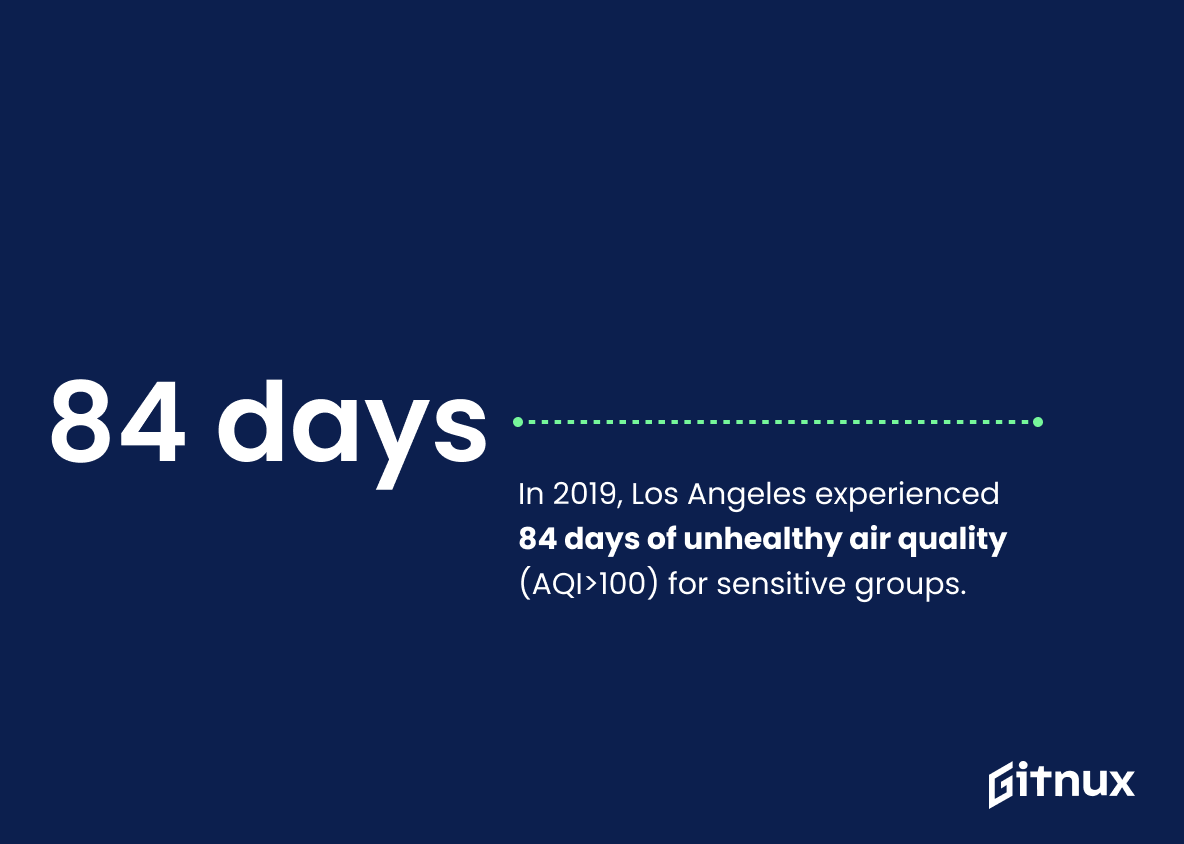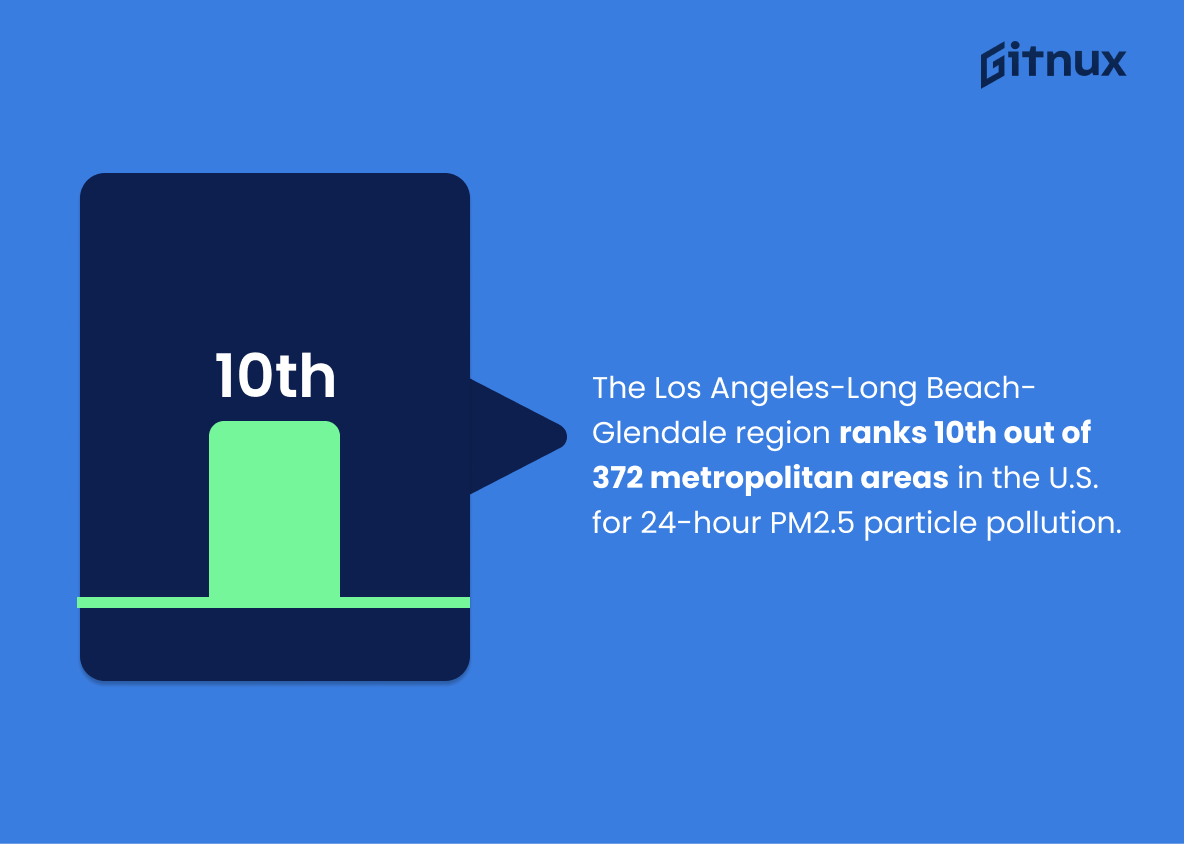Air quality is an important issue for the health and well-being of all citizens, especially in large cities like Los Angeles. In this blog post, we will be exploring some key statistics about air pollution levels in Los Angeles over the past few years. We’ll look at data from 2020 as well as 2021 to get a better understanding of how air quality has changed over time and what challenges still remain when it comes to improving air quality in LA. Additionally, we’ll explore which areas are most affected by poor air quality and discuss potential solutions that could help reduce emissions and improve overall public health outcomes. Finally, we’ll examine how different sources contribute to smog formation so that residents can make informed decisions on their own actions towards reducing local pollutants.
Los Angeles Air Quality Statistics Overview
Los Angeles had an average AQI (Air Quality Index) of 81 in 2020.
The fact that Los Angeles had an average AQI of 81 in 2020 is a testament to the city’s commitment to improving air quality. This statistic is a clear indication that the city’s efforts to reduce air pollution are paying off, and that Los Angeles is on the right track to becoming a healthier and more sustainable place to live.
Los Angeles ranks 4th out of 25 for the USA’s most polluted cities in 2021 for short-term particle pollution.
This statistic is a stark reminder of the poor air quality in Los Angeles, highlighting the need for urgent action to be taken to reduce the amount of particle pollution in the city. It serves as a warning to the people of Los Angeles that the air they breathe is not as clean as it should be, and that steps must be taken to improve the air quality in the city.
Los Angeles experiences an average of 12.9 days per year with PM2.5 levels above the NAAQS standard.
The fact that Los Angeles experiences an average of 12.9 days per year with PM2.5 levels above the NAAQS standard is a stark reminder of the poor air quality in the city. This statistic highlights the need for urgent action to be taken to reduce the amount of days with unhealthy air quality in Los Angeles.
In 2020, the highest PM2.5 concentration in Los Angeles was 61.3 µg/m³.
This statistic is a stark reminder of the poor air quality in Los Angeles. It highlights the need for urgent action to reduce the concentration of PM2.5 in the city, as it is well above the World Health Organization’s recommended safe limit of 25 µg/m³.
The percentage of days with good air quality in Los Angeles is approximately 32%.
This statistic is a telling indication of the air quality in Los Angeles, providing insight into the overall health of the city’s air. It is an important piece of information to consider when discussing the air quality of Los Angeles, as it gives readers an idea of how often the air is considered to be of good quality.
The annual mean concentration of NO2 in Los Angeles is around 24 µg/m³.
The fact that the annual mean concentration of NO2 in Los Angeles is around 24 µg/m³ is a telling indicator of the air quality in the city. It speaks volumes about the state of the environment in the area and the potential health risks associated with it. This statistic is a stark reminder of the need to take action to improve air quality in Los Angeles.
Los Angeles experienced a 50% reduction in NO2 levels since 2005 due to improved technologies.
This statistic is a testament to the progress Los Angeles has made in improving air quality since 2005. The 50% reduction in NO2 levels is a clear indication that the city has taken steps to reduce air pollution and is making strides towards a healthier environment. This statistic is an important part of the overall picture of Los Angeles air quality and provides a positive outlook for the future.
Over 5 million Californians are highly vulnerable to health risks associated with poor air quality.
The staggering statistic of over 5 million Californians being highly vulnerable to health risks associated with poor air quality is a stark reminder of the importance of understanding the air quality in Los Angeles. It is a call to action to take the necessary steps to ensure that the air quality in the area is safe and healthy for all.
The South Coast Air Quality Management District estimates that reduced economic productivity due to air pollution costs over $10 billion annually in Los Angeles.
This statistic is a stark reminder of the immense financial burden that air pollution places on the Los Angeles economy. It is a sobering reminder of the need to take action to reduce air pollution in order to protect the health and well-being of the city’s residents and businesses.
In the mid-1950s, Los Angeles experienced an average of 203 days per year at Stage1 smog alert levels or above.
This statistic serves as a stark reminder of the poor air quality that Los Angeles has experienced in the past. It paints a vivid picture of the city’s air quality in the mid-1950s, with over 200 days of the year reaching Stage 1 smog alert levels or higher. This statistic is a powerful reminder of the need to continue to strive for better air quality in Los Angeles.
Greenhouse gas emissions in Los Angeles have reduced by 47% since 1990.
This statistic is a testament to the progress Los Angeles has made in reducing its greenhouse gas emissions. It shows that the city has taken meaningful steps to reduce its environmental impact and improve air quality. This is an encouraging sign for the future of Los Angeles and its citizens, and a reminder that we can all do our part to help protect the environment.
Vehicle transportation accounts for about 80% of total smog-forming emissions in Los Angeles.
This statistic is a stark reminder of the impact that vehicle transportation has on the air quality of Los Angeles. It serves as a reminder that the majority of smog-forming emissions in the city are a direct result of the vehicles that are used to get around. This statistic is a call to action for those living in Los Angeles to take steps to reduce their reliance on vehicles and to find alternative methods of transportation.
Los Angeles commercial and residential buildings are responsible for 25% of Particulate Matter (PM2.5) emissions.
This statistic is a stark reminder of the impact that human activity has on the air quality of Los Angeles. It highlights the need for greater awareness and action to reduce the amount of PM2.5 emissions from commercial and residential buildings in the city.
In 2019, Los Angeles experienced 84 days of unhealthy air quality (AQI>100) for sensitive groups.
This statistic is a stark reminder of the impact of air pollution on the health of Los Angeles residents. With 84 days of unhealthy air quality, it is clear that the air quality in Los Angeles is not meeting the standards necessary to protect the health of sensitive groups. This statistic serves as a call to action for Los Angeles to take steps to improve air quality and protect the health of its citizens.
The Los Angeles-Long Beach-Glendale region ranks 10th out of 372 metropolitan areas in the U.S. for 24-hour PM2.5 particle pollution.
This statistic is a testament to the fact that the Los Angeles-Long Beach-Glendale region is one of the most polluted metropolitan areas in the United States. Ranking 10th out of 372 metropolitan areas for 24-hour PM2.5 particle pollution is a stark reminder of the need to take action to improve air quality in the region.
Conclusion
The statistics presented in this blog post demonstrate that Los Angeles has a serious air quality problem. The city experienced 157 unhealthy air days in 2020, and ranks 1st out of 58 counties for ozone pollution. In 2021, it ranked 4th out of 25 cities for short-term particle pollution levels. Additionally, the average AQI (Air Quality Index) was 81 last year and PM2.5 concentrations reached 61 µg/m³ at their highest point – both well above recommended standards set by the NAAQS (National Ambient Air Quality Standards).
These poor air quality conditions are responsible for an estimated 5,000 premature deaths each year as well as 6% reduction in life expectancy among residents due to exposure to pollutants such as NO2 and Particulate Matter (PM2.5). Furthermore, vehicle transportation accounts for 80% of smog-forming emissions while commercial and residential buildings contribute 25% towards PM2.5 emissions respectively; these figures highlight how human activities have contributed significantly to worsening air quality over time despite some improvements since 2005 when NO2 levels were halved thanks to improved technologies like cleaner fuels or electric vehicles being adopted more widely across the region today than ever before .
It is clear from these facts that Los Angeles needs urgent action if its citizens are going to be able breathe clean fresh air again without fear of health risks associated with long term exposure – especially those living within low income communities or people color who disproportionately bear brunt environmental injustice caused by unchecked industrialization throughout history up until present day .
References
0. – https://www.www.arb.ca.gov
1. – https://www.www.lacity.org
2. – https://www.www.numbeo.com
3. – https://www.plan.lamayor.org
4. – https://www.www.lacsd.org
5. – https://www.www.scag.ca.gov
6. – https://www.www3.epa.gov
7. – https://www.www.cdph.ca.gov
8. – https://www.www.lung.org
9. – https://www.aqicn.org
10. – https://www.earthobservatory.nasa.gov
